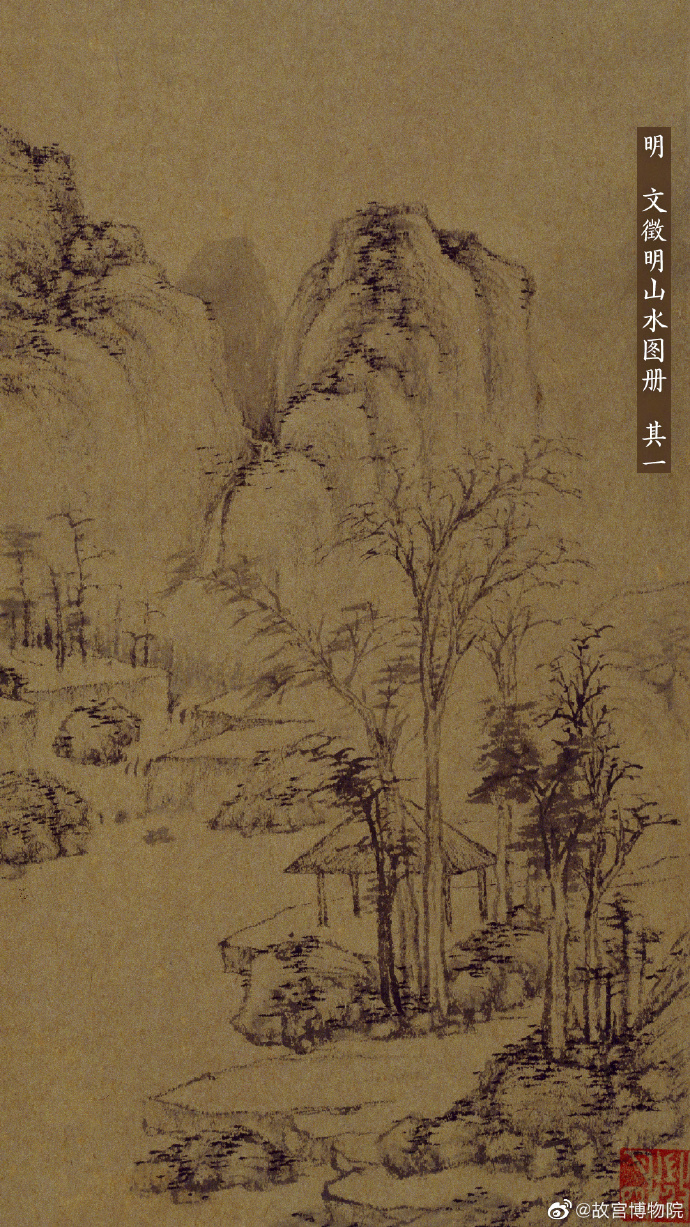Painter and their world……. Ming Dynasty four masters Painter Calligrapher Poet… 文徵明Wen Zhengming, with comprehensive accomplishments in calligraphy and painting, he works in landscapes, orchids and bamboo, flowers, and figures. In the history of painting, he, Shen Zhou, Tang Yin, and Qiu Ying are collectively referred to as the “Four Schools of Wu Men”. This set of Wen Zhengming’s landscape albums is vivid and exquisite,
Wen Zhengming was born on November 28th Monday , 1470–1559, born Wen Bi, was a Chinese painter, calligrapher, and poet during the Ming dynasty. He was regarded as one of the Four Masters of Ming painting …… Born in present-day Suzhou, he claimed to be a descendant of the Song Dynasty prime minister and patriot Wen Tianxiang (文天祥). Wen’s family was originally from Hengyang, Hunan, where his family had established itself shortly after the 10th century. Not until the time of Wen’s great-grandfather, Wen Hui, a military officer, did the family move to the Suzhou area.
Wen Zhengming was one of a number of Ming dynasty literati artists who set themselves in opposition to the professional, academy-influenced style favoured in the region of Zhejiang Wen and other amateur artists of the Wu school (named after the region around Suzhou, where many of them were based scholar-artist tradition of the preceding dynasties. Eschewing official sponsorship and hostile to the politics of the imperial court, these artists sought private patrons and the respect of their peers, frequently painting works in the style of older masters……..Wen studied under the founder of the Wu school, Shen Zhou, whose style he was deeply influenced by. He sometimes added his own poetry to Shen Zhou’s paintings, thereby benefitting from the latter’s established reputation. After he achieved fame in his own right, Wen’s many colophons to Shen Zhou’s works often lent them authenticity in the eyes of collectors
Wen and his mentor both revered the artists of the preceding Song and Yuan dynasties, though he rarely imitated them directly. He produced works in a number of styles, and has been called a “chameleon” whose works could easily be misidentified……..Wen’s paintings were highly sought after by wealthy collectors throughout the 16th century, and counterfeits of his works were common during the late Ming
Wen often chose painting subjects of great simplicity, like a single tree or rock. His work often brings about a feeling of strength through isolation, which often reflected his discontent with official life. Many of his works also celebrate the contexts of elite social life for which they were created. He collaborated in the design of the Humble Administrator’s Garden (拙政園), generally considered one of China’s four greatest gardens.
Wen Zhengming is regarded as one of “the Four Masters of Ming” (明四家), which also includes Shen Zhou (沈周), Tang Yin (唐寅), and Qiu Ying (仇英). …..
During the year’s 2020, the second decade from the turn of the century in Beijing the Capital of China also the People’s Republic of China, in which is also the year of the rat, marking its six hundred years anniversary of the Forbidden city that marks the transitional point of in between the middle of the Ming Dynasty (1368- 1644) transitionally from Nanjing to Beijing towards the Qing Dynasty (1636-1644-1911) …. The Imperial Palace seen so many countless seasonally transitional equinoxes but further its six hundred years is iconic, but it’s five hundred ninety nine years it marks it Autumn Equinox…. In which it only took twelve years to build the same of the Daming Palace of The Tang Dynasty Xian Imperial Capital only it was least twenty times larger……
Imagines credit are of the Forbidden city –Imperial Palace –Beijing – China- People’s Republic of China













